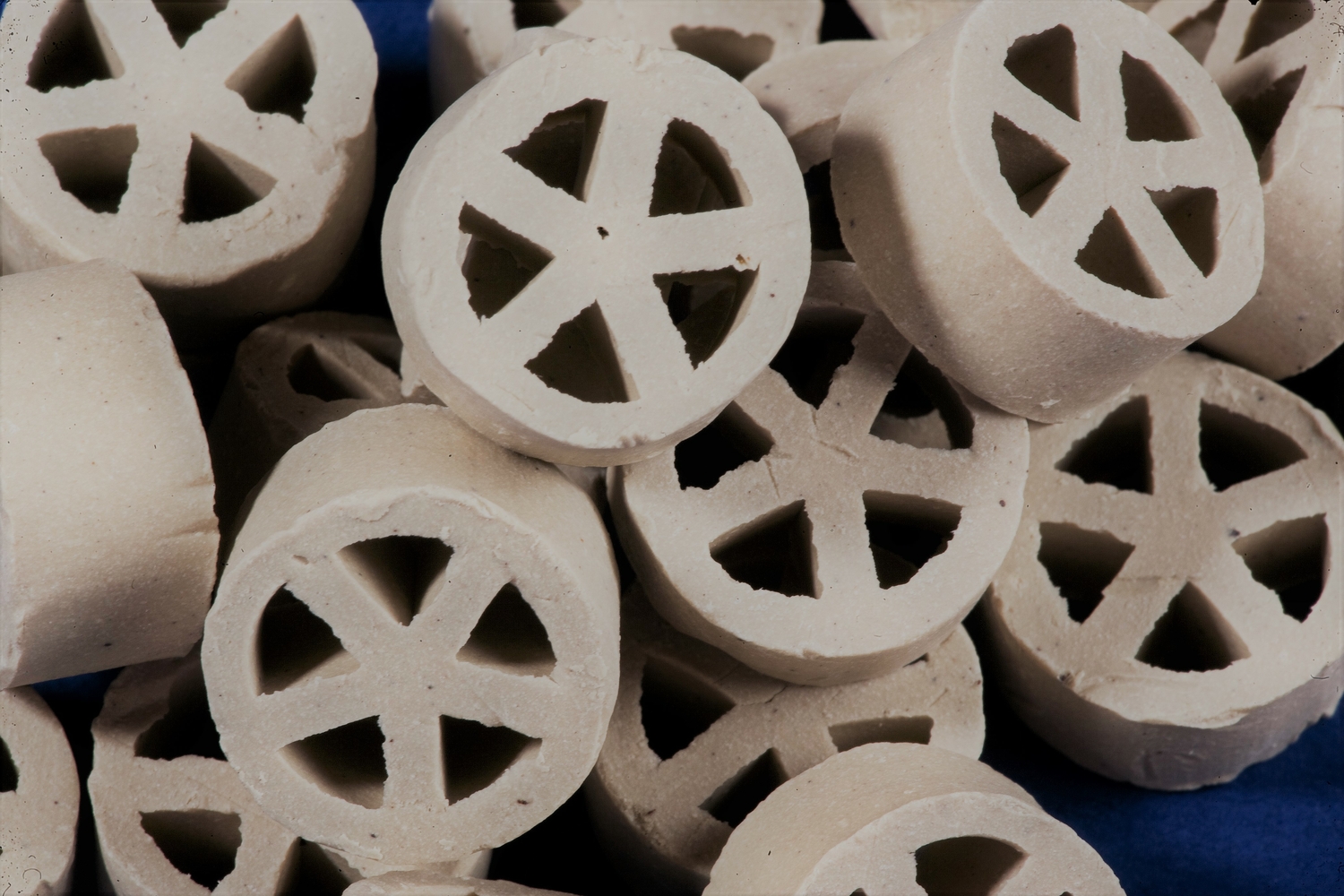
Axens Offer
Particulates can have various origins such as:
- Iron scales
- Iron sulfides
- Coke fines (from coker products)
- Catalyst fines (from FCC products)
- Sediments
- Salts
Proper feed filtration system should be able to remove most of these particulates contained in the feed. However, scales from the unit equipment or particulates formed within the unit itself (iron sulphide, coke and in some cases clays) have to be handled by a dedicated grading.
This grading must be designed to ensure the maximum retention while minimizing the pressure drop. Therefore, a proper arrangement of high void fraction materials with decreasing size, various porosities and surfaces, increased activities must be put in place.
ACT 068
ACT 068 has been developed to extend the cycle length of units experiencing pressure drop due to particulate deposition or top bed crust formation. ACT 068 replaces ineffective inert balls used for bed hold-down at the top of catalytic reactors in liquid phase or vapor phase service, such as refinery hydrotreating and other similar applications.
ACT 069
ACT 069 has been developed to extend the cycle length of units experiencing pressure drop due to particulate deposition or top bed crust formation. ACT 069 replaces ineffective inert balls used for bed hold-down at the top of catalytic reactors in liquid phase or vapor phase service, such as refinery hydrotreating and other similar applications
ACT 077
Highly inert alumina fluted ring with a high void fraction to trap particulates and other contaminants in the feed to mitigate pressure drop build-up.
ACT 078
Ceramic fluted ring specially shaped to provide a high void fraction, effecting efficient removal of particulates. The surface has been specially designed to trap a higher amount of fines.
ACT 108
ACT 108 has been developed to extend the cycle length on units experiencing pressure drop due to particulate depositions (solid deposits such as rust, gums, coke, …) or top bed crust formation. ACT 108 replaces ineffective inert alumina balls used for bed hold-on at the top of catalytic reactors operating in liquid, mixed or vapor phase, such as Hydrogenation/Hydrotreating or similar applications.
ACT 139
ACT 139 has been developed to extend the cycle length on units experiencing pressure drop due to particulate depositions (solid deposits such as rust, gums, coke, …) or top bed crust formation. ACT 139 replaces cost effectively ineffective inert alumina balls used for bed hold-on at the top of catalytic reactors operating in liquid, mixed or vapor phase, such as Hydrogenation/Hydrotreating or similar applications.
You Might Be Interested In
Gums & Polymer formation control
Reactor Internals
Catalyst Protection Systems
TO CONTACT US
Please fill in the contact form below